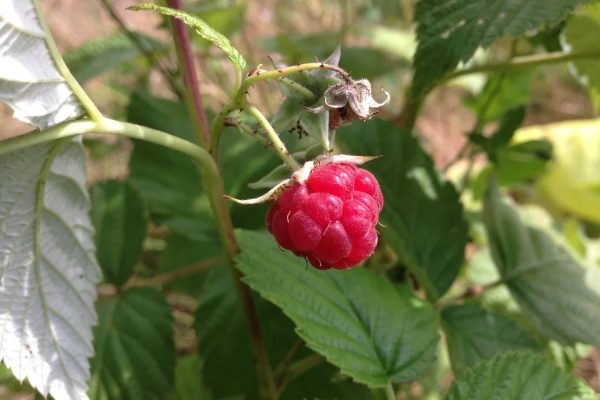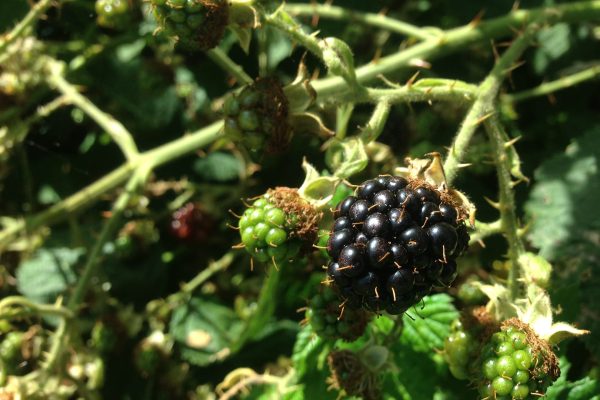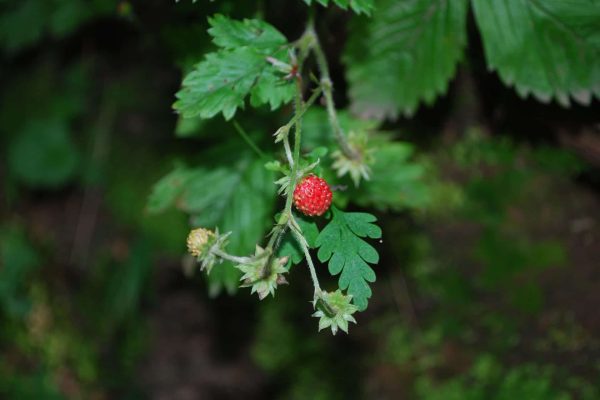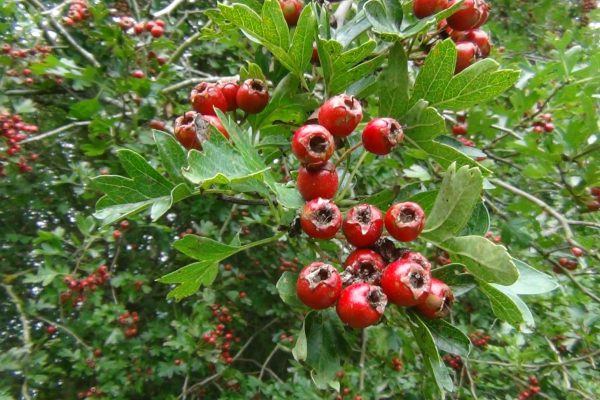Forage for borage

Marta Jacyna
Foraging for food is very rewarding – there is so much nature can give us that it would be a real shame not to make the most of it. From jams, teas and salads, to additions for soups, sauces or even medicine, your local field can help you fill up your pantry with all sorts of goodies. Everything you forage will be fresh and natural.
Plants can be your friend or foe; never use anything you don’t recognise. Confusing two similar-looking plants can end badly.
Hogweed is a prime example of how things can go wrong. In itself it is tasty and you can pretty much use every part of it in the kitchen. However, confuse it with giant hogweed and you’re in for a nasty surprise. After touching the latter, your skin will lose resistance to UV rays and will blister terribly. What’s even worse, it might well haunt you for many years to come. Getting sap in your eyes can end with temporary or even permanent blindness.
Foraging for wild fruits
The easiest to spot are the fruits. Blackberries, raspberries and hawthorn can be found around most fields and hedges in late summer. All can be used for jams and pies. Hawthorn is a great addition to jellies as it contains a lot of pectin, paspberry leaf tea is great for stomach upsets and wild strawberries can be picked in open, bright woodland. You will also find delicious bilberries growing in heather in the summer.
To weed or not to weed?
You can even do a bit for conservation on top of filling your fridge with goodies by using the Himalayan balsam. It grows along rivers and damp fields from spring onwards. This plant is an invasive, non-native species and we should do our best to get rid of it. Use young leaves and flowers in salads or its seeds which have a nutty taste and are best picked when pale.
If you have a particularly annoying weed that sticks to everything in your garden, it’s probably cleavers. And, it’s actually a lovely herb full of vitamins and minerals. You can blanch and use them as a leaf vegetable. This will remove the stickiness, making them easier to eat. An interesting thing about cleavers is that they belong to the coffee family. You can dry and roast the little seeds and use them as a coffee substitute.
Young stinging nettle leaves can also be used for cooking. And if you have dandelions spoiling your lawn, the next time you pull them out, try cooking the younger leaves like spinach. The flowers make a fabulous addition to salads and the root can be roasted. If you pick the flowers early in the morning, you can make fabulous tea, marmalade and even wine. Really worth a try!
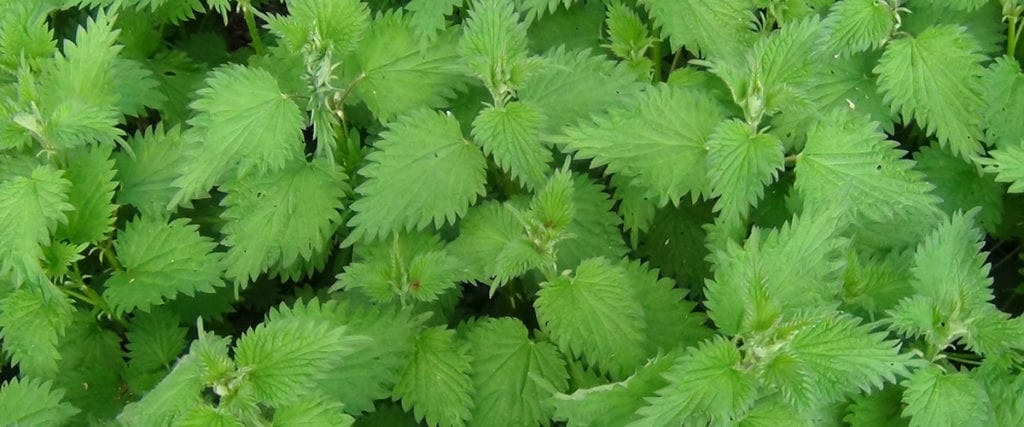
Healthy and delicious herbs
Wild watercress can be found in ponds and rivers. It is a very healthy addition to your diet as it contains iodine and high levels of vitamin K. Be careful though! If there are sheep around, always cook it to avoid liver flukes. Interestingly, watercress was one of the very first greens humans started to consume.
Another little plant you probably often see in the woods is the wood sorrel. The small, clover-like leaves and white flowers might not look like much, but the plant was used to treat scurvy in the past, because it’s packed with vitamin C. You can use it in salads, or eat it raw if you’re out and suddenly feel thirsty – eating a handful of the leaves is a great thirst-quencher.
Most people enjoying the countryside know when the wild garlic season begins… It really is impossible to miss the sharp smell spreading all over woodlands in the country! You can use it in the kitchen in a lot of ways. Leaves are the tastiest part of the plant, and because it’s always abundant, try to pick leaves from various plants so the damage is minimal. Try using wild garlic in pesto, soups, stews and in any other dish that will benefit from a good, garlicky flavour.
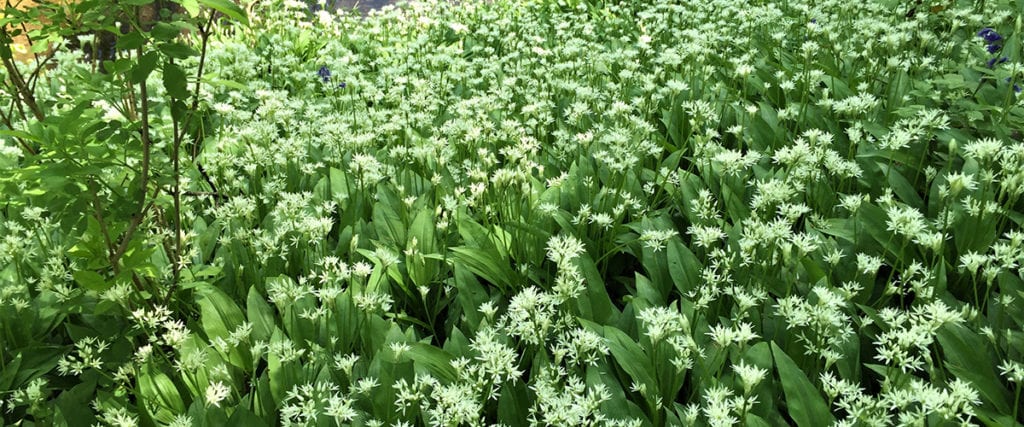
Now elderflower (yes that stinky little tree) is very useful too. Use the flowers to make lovely syrup, cordial or champagne, or dip them in batter and deep fry. Berries can be used to make wine (caution: raw berries are mildly toxic so cook them well). Don’t try to eat any other parts of the plant as they are not edible.
Last but not least is the borage, with its pretty blue flowers. Borage tastes like cucumber and its flowers and young leaves can be used in salads. It is fairly common and you will definitely spot it once you start looking.
Foraging for food – where to start?
You can easily find help and advice about foraging for food online or through many useful books. The Wild Food UK website is a great resource for foraging beginners. They also offer foraging courses, you can sign up to foraging alerts, try their recipes and go through their hedgerow food guide which is really helpful.
Another useful source of information is the Association of Foragers. You’ll find tons of useful information there and they also offer foraging courses and workshops.
Don’t forget to read the Foragers’ Code before diving into foraging – it’s filled with useful tips and things to remember. It’s available on here.
There is plenty more out there you can use in the kitchen, but do your research carefully before striding outside.
Why not try making elderflower syrup?
 It’s easy to make and delicious when mixed with sparkling water or lemonade.
It’s easy to make and delicious when mixed with sparkling water or lemonade.
- Cut the blossoms off the branches (about two cupfuls). Only take fully opened, fresh flowers.
- Next, grab a large pot and fill it with about 1kg of sugar, add five cups of water and 1tsp of citric acid (this will keep your syrup fresh for longer).
- Bring the syrup to the boil and cook until sugar dissolves.
- Give it five more minutes; wash and cut one lemon and remove the stems from elderflower blossoms.
- Put the flowers and the lemon in a large bowl and pour in the hot syrup.
- Stir gently to blend the ingredients.
- Cover the bowl with a tea towel and keep it in a cool, dark place for up to four days, stirring daily.
- After letting it steep, strain the blossoms from the syrup and store it in jars. Enjoy!
